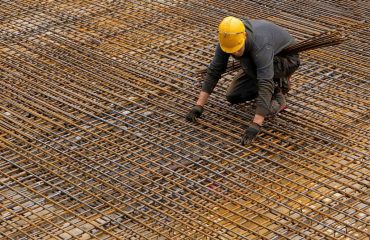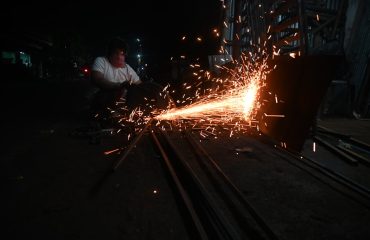Steel, an alloy primarily of iron and carbon, forms the backbone of countless industries. Its versatility stems from the broad range of properties achievable by manipulating its composition. This guide delves into the diverse world of steel varieties, exploring their characteristics and applications.
Understanding Carbon Steels: The Foundation of Steel Production
Carbon steels represent the simplest and most common type of steel. Their properties are primarily determined by the carbon content, ranging from less than 0.05% to about 2.1%. Low-carbon steels (mild steels), with carbon content below 0.3%, are known for their ductility, weldability, and ease of forming. They’re widely used in construction, automotive parts, and general manufacturing. Medium-carbon steels (0.3% to 0.6% carbon) offer improved strength and hardness, making them suitable for applications requiring greater durability, such as railway tracks and machinery components. High-carbon steels (0.6% to 2.1% carbon), possess exceptional hardness and wear resistance, finding applications in tools, springs, and cutting blades. The higher the carbon content, generally the stronger and harder the steel, but at the cost of reduced ductility and weldability.
The Versatility of Alloy Steels: Enhancing Properties Through Additions
Alloy steels are enhanced by the addition of other alloying elements besides carbon, such as manganese, chromium, nickel, molybdenum, and vanadium. These additions significantly alter the steel’s properties, leading to a wide array of specialized applications. For instance, manganese increases strength and hardness, while chromium improves corrosion resistance. Nickel enhances toughness and ductility, and molybdenum boosts high-temperature strength. The specific combination of alloying elements determines the final properties of the alloy steel, allowing for tailored solutions for diverse engineering challenges. Common examples include high-strength low-alloy (HSLA) steels used in construction and automotive industries for their lightweight yet strong characteristics, and maraging steels renowned for their exceptional toughness and strength at high temperatures.
Stainless Steels: The Champions of Corrosion Resistance
Stainless steels are a subset of alloy steels characterized by their high chromium content (generally at least 10.5%). This chromium creates a passive chromium oxide layer on the steel’s surface, providing excellent resistance to corrosion and oxidation. Different grades of stainless steel offer varying degrees of corrosion resistance, strength, and workability. Austenitic stainless steels, like 304 and 316, are non-magnetic, highly ductile, and possess excellent corrosion resistance. They are widely used in food processing, chemical plants, and medical equipment. Ferritic stainless steels, such as 430, are magnetic and offer good corrosion resistance but are less ductile than austenitic grades. Martensitic stainless steels, like 410, are hardenable and possess high strength, often used in cutlery and surgical instruments. The choice of stainless steel grade depends heavily on the specific application and its environmental conditions.
Tool Steels: Precision and Durability in One Package
Tool steels are specifically designed for applications requiring exceptional hardness, wear resistance, and dimensional stability at high temperatures. They typically contain high levels of carbon and other alloying elements like tungsten, molybdenum, vanadium, and chromium. These elements contribute to the steel’s ability to retain its hardness even after repeated use and high temperatures. Different tool steels are optimized for specific machining operations such as cutting, drilling, and forming. High-speed steels (HSS), for example, are known for their ability to maintain hardness at high cutting speeds, while cold work tool steels are used for applications where high strength and wear resistance are crucial at room temperature. The selection of a tool steel heavily depends on the specific application’s demands.
Specialty Steels: Tailored Solutions for Unique Applications
Beyond the major categories, numerous specialty steels cater to niche applications requiring unique properties. These include steels with enhanced magnetic properties used in electrical motors and generators, cryogenic steels designed for extremely low temperatures, and steels with exceptional resistance to specific chemicals or environments. Examples include maraging steels (mentioned previously, but worth reiterating here due to their unique properties), which combine high strength with excellent toughness, and precipitation-hardening stainless steels, which achieve high strength through heat treatment rather than carbon content. The development of these specialty steels continues to push the boundaries of material science and engineering.
The selection of the appropriate steel for a given application requires careful consideration of its intended use, the environmental conditions, and the required mechanical properties. Understanding the vast array of steel varieties empowers engineers and designers to choose the optimal material for maximum performance and durability.
SEO-Friendly Tags:
- Steel Types
- Steel Grades
- Carbon Steel Properties
- Stainless Steel Applications
- Alloy Steel Selection




